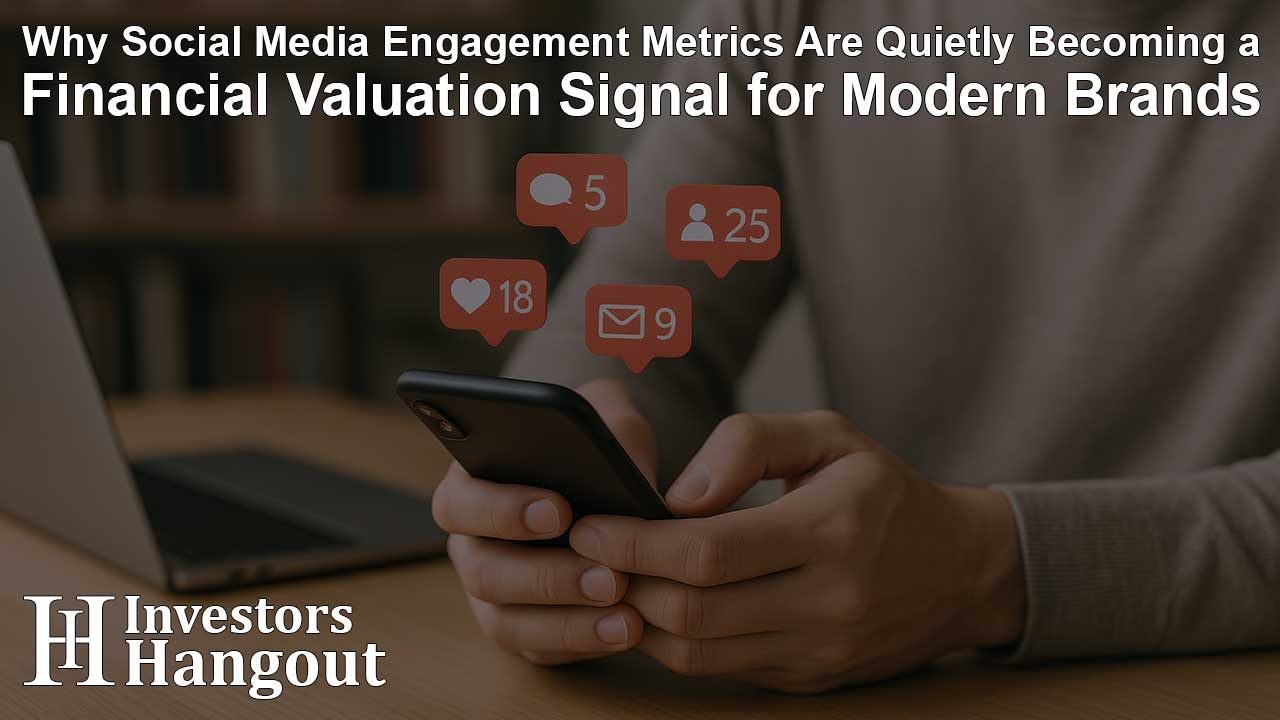Why Social Media Engagement Metrics Are Quietly Becoming a Financial Valuation Signal for Modern Brands

You know what still cracks me up? When a brand brags about its two million followers… and their posts are getting, what, maybe twenty likes? One lonely comment from an intern?
We all know that account. It’s like yelling into an empty warehouse that just happens to have a crowd of cardboard cutouts.
A few years ago, that didn’t bother anyone. Follower counts were the shiny object. The more you had, the more “important” you looked. But lately, something’s changed — and fast.
The people who put money behind brands (investors, acquirers, even some CFOs) are realizing that engagement tells a much richer story than audience size ever could.
I’ve sat in meetings where analysts were scrolling through a brand’s TikTok, checking how people commented, what they said, and how the brand replied.
Not because they cared about hashtags — but because they saw engagement as a kind of early-warning system for customer loyalty and revenue potential.
Engagement Isn’t Just a Marketing Metric Anymore
Here’s the truth: if a community talks back, that brand has leverage. Real engagement means people care enough to react, share, and argue a little. That’s a living ecosystem — not a dead metric.
From a financial angle, engagement connects directly to the health of the customer base. High engagement often means better retention and lower marketing costs, which investors translate into stronger LTV/CAC ratios and, yes, higher valuations.
Think about it like this: Brand A has 80,000 followers, and half of them comment, share, or click. Brand B has 800,000 followers, and barely anyone engages.
Brand A’s marketing spend stretches further, their customers buy repeatedly, and their audience acts as unpaid ambassadors. That’s efficiency — and efficiency is what investors love to model into future cash flow.
So when I say engagement is becoming a valuation factor, I’m not exaggerating. Analysts are literally connecting the dots between comment threads and customer lifetime value. It’s wild — but it’s happening.
But Measuring Real Engagement Is Still Messy
Here’s the part most people gloss over: the data is a hot mess.
Bots, spam, inflated likes — it’s all still out there. You can’t just download one report and call it a day. Every platform defines “engagement” differently, and half the numbers mean nothing without context.
I’ve seen brands run a campaign that crushed it on TikTok but looked dead on Instagram. Why? Different audience behavior, different culture, different signals. And unless you’re cross-checking everything, you’ll end up celebrating the wrong thing.
The other trap is confusing momentary hype with sustained engagement. A post can go viral and spike your numbers, but that doesn’t mean those people stick around or buy anything. Real engagement shows up when people consistently talk to you, not just about you.
The Tools That Help You Separate Signal from Noise
Thankfully, there’s been a wave of new tools trying to clean up this chaos.
Platforms like BuzzVoice and a few others (depending on your stack) are leaning into genuine engagement tracking. They don’t just count likes; they analyze comment quality, detect fake followers, and track which types of content spark actual conversation.
Some even merge that data with CRM or Shopify analytics — showing exactly how engagement influences revenue.
And honestly, if you’re trying to build a strong TikTok community, those insights are game-changers. You can finally see which videos trigger real discussion versus which ones just get scrolled past.
I’ve seen small brands triple their interaction rate simply by noticing which content made people talk back.
That’s when engagement turns into something tangible — something you can take into a pitch meeting and say, “Here’s why our audience isn’t just watching… they’re with us.”
What Smart, Investor-Minded Brands Are Doing Differently
So what are the forward-thinking teams doing right now?
1. They’re redefining KPIs
Instead of obsessing over impressions, they’re tracking share ratios, saves, and conversations per post. That shows depth, not just reach.
2. They’re benchmarking realistically
Engagement looks totally different across industries. A 4% engagement rate in B2B is incredible; in fashion, it’s average. The key is knowing your lane.
3. They’re auditing their audiences
Every few months, clean out ghost followers and bots. A smaller, active audience almost always performs better than a bloated one.
4. They’re tying engagement to business data
When you can point to a month where engagement spiked and conversions jumped, that’s storytelling investors understand.
5. They’re prioritizing consistency over virality
Especially on TikTok — steady, authentic content builds community faster than one-off hits. You want people who come back, not just pass by.
Those are the real social media growth tips that actually matter right now. Everything else is just chasing algorithms.
Engagement as a Real Asset
Here’s the big takeaway: engagement isn’t “fluff” anymore. It’s a living indicator of how resilient a brand is in the wild.
We used to measure brand value by awareness. Now, we measure by interaction — how much energy a brand creates inside its community. Engagement is momentum. It’s sentiment. It’s how trust looks in the digital age.
If you’re a marketer, start treating your engagement data like part of your balance sheet. If you’re an investor, start asking the uncomfortable questions about it.
Because the brands that build loyal, talkative, authentic audiences are going to weather algorithm changes, ad cost hikes, and whatever new platform pops up next. Engagement isn’t just marketing success anymore — it’s a preview of financial stability.
And that’s not theory. That’s the direction the entire digital market is already moving in — whether your metrics are ready for it or not.
Final Thought
Here’s how I see it: engagement is basically brand currency. The more genuine and active it is, the more valuable your brand becomes — not just socially, but financially.
It’s not about chasing every new trend or gaming the algorithm. It’s about showing up, creating things people actually respond to, and building relationships that survive beyond a platform’s latest update.
Because in the end, numbers can be bought — but engagement? That’s earned. And soon enough, the markets are going to start pricing it that way.
About The Author
Contact Olivia Taylor privately here. Or send an email with ATTN: Olivia Taylor as the subject to contact@investorshangout.com.
About Investors Hangout
Investors Hangout is a leading online stock forum for financial discussion and learning, offering a wide range of free tools and resources. It draws in traders of all levels, who exchange market knowledge, investigate trading tactics, and keep an eye on industry developments in real time. Featuring financial articles, stock message boards, quotes, charts, company profiles, and live news updates. Through cooperative learning and a wealth of informational resources, it helps users from novices creating their first portfolios to experts honing their techniques. Join Investors Hangout today: https://investorshangout.com/
